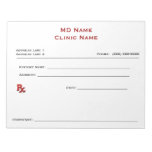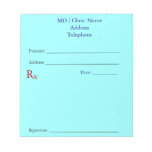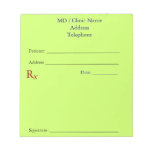Urgent care facilities appeal to patients seeking immediate care - often when their primary care physician’s office is closed or they can't get a timely appointment. In some circumstances, urgent care can be less expensive and have a quicker turnaround time. On-demand telemedicine services, not associated with a primary care physician or a designated specialist, are on the rise - with new websites popping up more frequently and employers offering video-based options to employees. Although sometimes beneficial, these services are another factor pulling patients away from seeing their chosen provider or specialist.
Let's go over the serious impact patient leakage can have on a practice, and some solutions for providers to combat this issue:
Clinical Impact of Patient Leakage - Uncoordinated Care
While these convenient options to care are appealing to patients, there are often unintended clinical consequences that can’t be ignored. Uncoordinated, fragmented care can result in unnecessary testing and conflicting treatments. Furthermore, without access to a patient’s medical records and history, urgent care centers and on-demand telemedicine providers risk misdiagnosis and dangerous medication interactions.
“If care isn’t coordinated in a way that improves outcomes, patient satisfaction, decreases costs and even provides provider satisfaction, everybody suffers.”
- Reid Blackwelder, MD, President of the American Academy of Family Physicians (AAFP)
Financial Impact - Revenue Suffers
When easy, less complex and less time consuming cases are lost to urgent care facilities and on-demand telemedicine providers, the overall economics of a practice suffers. Practices simply can’t survive on complex cases alone. More often than not, less complex cases comprise the bread and butter for most primary care physicians.
Practices can’t survive on complex cases alone. Less complex cases are the bread and butter for most practices.
In our on-the-go era of immediate gratification, here's a snapshot of options patients have other than primary care services: Retail clinics see 10.5 million visits annually, according to a 2015 report, due to their convenience, accessible hours and low cost. There are more than 9,000 urgent care centers in the U.S, with approximately 300 more opening up each year (Advisory Board). More than a third of large companies are offering services at nearby clinics, often at discounted rates.
Solution - Offer Convenience and Increased Communication
Adding convenience and improving communication with patients can be a winning combination for stemming patient leakage.
Bring Video Visits to Outpatient Clinics: Because patients are seeking convenient access and improved continuity of care, most believe video visits with their primary care physician or specialist are a great idea. Besides increasing patient satisfaction and retention, video visits can also improve clinical outcomes. Because the provider has full access to the patient’s medical history, this reduces the risk of misdiagnosis, unnecessary testing, and adverse events.
Increase Patient Engagement with Better Communication: Are you leveraging software that offers secure and easy to use communication with patients? Technology options includingmobile EHRs, secure two-way text and email messaging, and accessible patient portals help create a personal connection with your patients, building loyalty and staying power. The provider-patient relationship always ranks high of any list about what patients are looking for in their healthcare.
Overall, patient demand for access and convenience, combined with employers’ desire to reduce benefits costs is rapidly changing the healthcare delivery landscape. Urgent care centers and on-demand telemedicine options are quickly filling a void that PCPs are able to fill themselves in many cases. By offering video visits (whether it be in time blocks or after-hours) and convenient communication options, primary care physicians and specialists can ensure that their patients are healthy, happy and loyal.
Medical Office Supplies
15% Off All Products

Manual Prescription Pad (Large - White) Memo Pad

Manual Prescription Pads (Light Blue) Notepads

Manual Prescription Pads (Light Yellow) Notepad

Manual Prescription Pads (Light Pink) Notepad
No comments:
Post a Comment